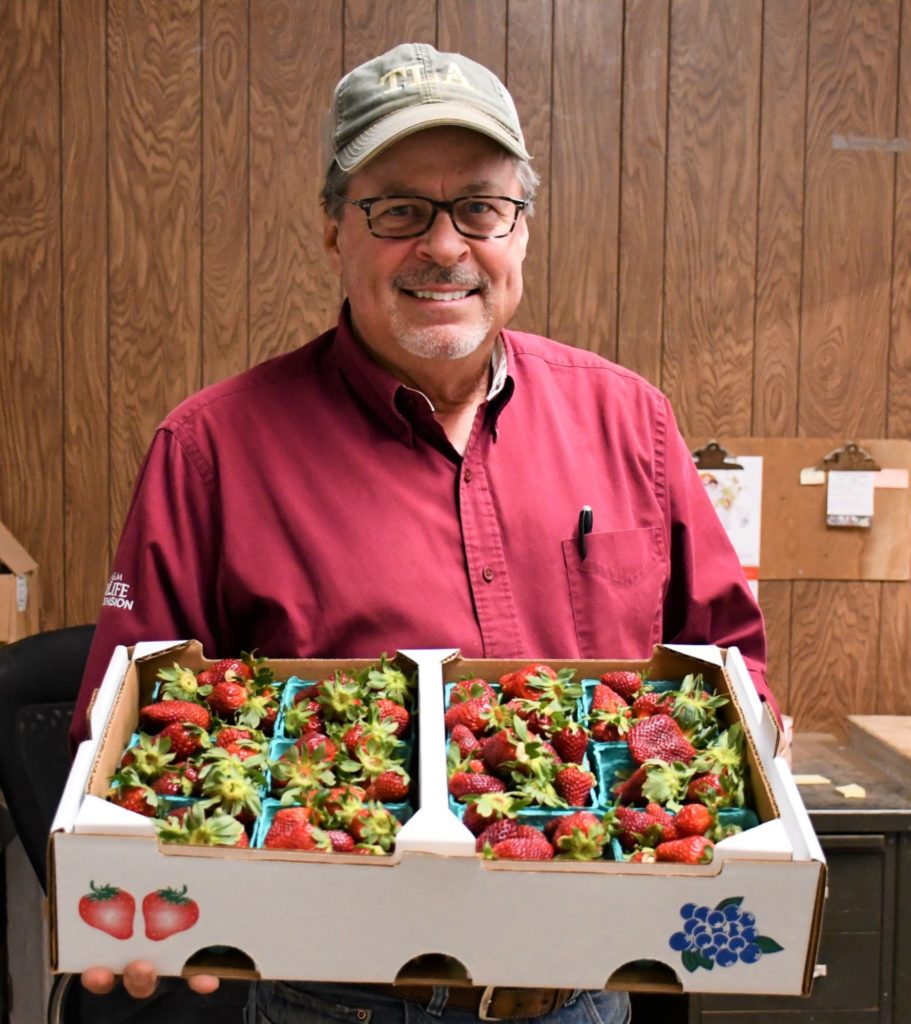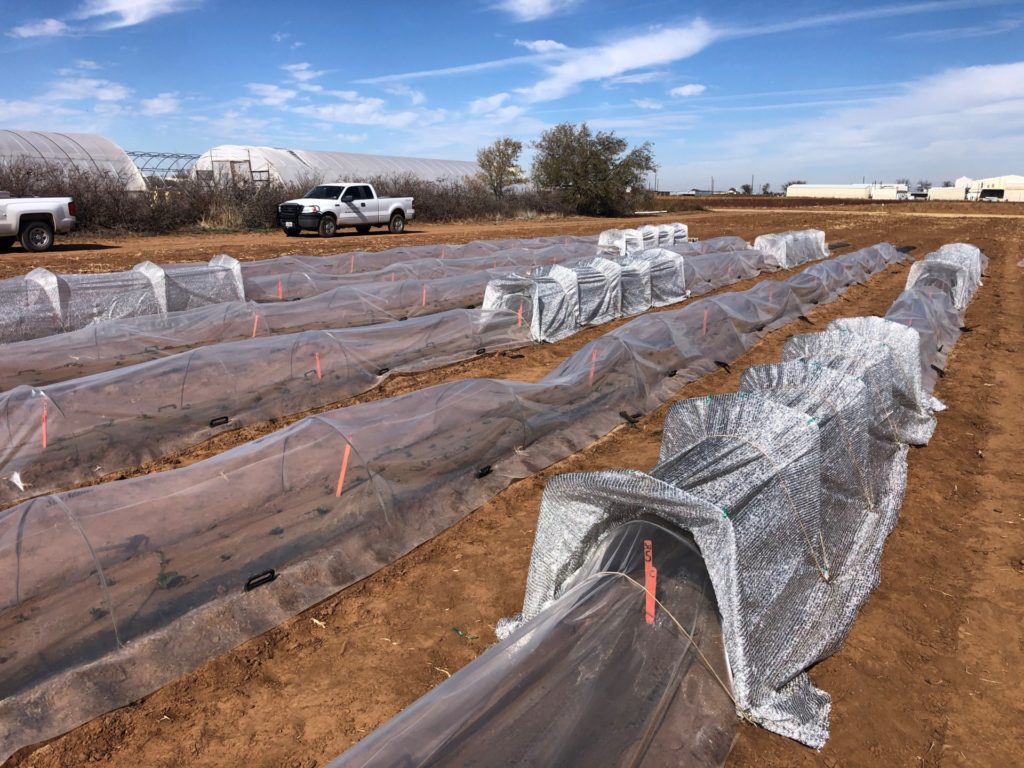Texas A&M AgriLife strawberry research receives specialty crops grant
Texas Department of Agriculture extends funding another two years
The Texas A&M AgriLife Extension Service has received their second Texas Department of Agriculture Specialty Crops Block Grant for an “Increasing Texas Strawberry Profitability” project.

The project is a statewide collaboration lead by AgriLife Extension’s Russ Wallace, Ph.D., horticulturist, Lubbock. The co-principal investigator is Thayne Montague, Ph.D., Texas Tech University associate professor of horticulture with joint appointment to Texas A&M AgriLife Research, Lubbock.
Wallace said AgriLife Extension county agents, Prairie View A&M University research scientists and Texas Tech graduate students are also assisting with the project. The grant runs through 2022.
Strawberry science
“We’re extremely excited about what we’ve learned thus far to successfully grow strawberries in Texas and increase profitability,” said Wallace. “This is the next step in our ongoing research where we’ll be doing more work with shading trials, fine-tuning fertilization and additional work with herbicides. We’re pleased that TDA considers strawberries an important crop for continued research funding.”
This work builds upon the earlier research, “Enhancing Productivity and Resiliency of Texas-Grown Strawberries Through Research and Grower Training,” which was also funded by a TDA Specialty Crops Block Grant Program from Dec. 1, 2018 through Sept. 30, 2020.
“We had some great research success with that project including determining appropriate fertilizer rates by variety and weed management programs using herbicides,” Wallace said. “We also had success using low tunnels for northern climates to protect crop growth.”
Montague said a great dynamic can be created when researchers from different backgrounds collaborate on a project, and Wallace included experts from across Texas to investigate challenges strawberry growers may face no matter where they are growing their crop.
“For me, the really exciting part of this project is how several different universities and agencies – AgriLife Extension, AgriLife Research, Texas Tech University, Prairie View A&M University – and the Poteet Strawberry Festival Association and a number of growers will be collaborating,” Montague said.
Wallace said some of the interesting findings so far include which varieties improve or decrease yield based on fertilization rates and an increased understanding on which varieties are best suited for different growing environments in Texas.
Stakeholder success
“It’s exciting to see our work have real-world applications for our stakeholders — we now have the very first commercial strawberry producer in Lubbock County,” said Wallace. “He had 5,000 plants last year and planted 30,000 this year. To see him utilizing what we’ve learned so far and to be able to go out and see his fields is just wonderful.”
The grant also provides funding to help communicate information learned from the group’s experiments to Texas strawberry producers.
“Because funding for this grant is for very applied research, during and after the granting time period we will be holding a number of workshops, field days and training sessions online, and throughout the state,” Montague said. “Meeting with strawberry growers and presenting research data, which can directly help growers overcome their challenges is an important aspect of the grant.”
Producer Ruth Anne Schultze, who has 64,000 plants over 3 acres in Poteet, has been working with AgriLife Extension agent for Atacosa County Dale Rankin and Wallace since the first grant and has participated in field trials.
“It has been beneficial to all of our farmers because Dr. Wallace periodically has seminars reviewing all of his findings and how we can implement these findings to our own crop,” said Schultze. “He is always eager to help the farmers, whether it is a new, small farmer or an older, experienced farmer.”
Schultze said they’ve learned more about pre-emergent herbicides, fertilizer rates and types of fertilizer that can be used and the feasibility of low tunnels and low tunnel shade cloth from the studies.
“This research helps all of us determine the best strawberry varieties for our area,” she said. “My husband and I are members of the Poteet Strawberry Growers Association, and we share the information we learn with other local farmers.”
Graduate student Mackenzie Cox of Texas Tech is also involved with the research and will be collecting data from several strawberry projects for her thesis. She has already initiated experimental plots in Lubbock and Poteet.
Different strawberry regions, needs
Commercial strawberries are grown in several regions throughout Texas.
“Each location, Lubbock, Arlington, Poteet, Houston, etc., has vastly different soils, climate and overall growing conditions,” explained Montague. “One of the main challenges strawberry producers in Texas face is what particular strawberry variety may perform best in their specific location, and what management techniques will give them the greatest yields and highest quality fruit.”

Montague said in addition, strawberry producers need information on the amount of fertilizer, which helps plants to maximize yield.
“Growers are concerned about fertilizer costs and reducing fertilizer runoff,” he said. “Water-use efficiency, yield of product produced/volume of water applied, is a critical part of agriculture. Growers need information on how to maximize yield but use less water. With the tools and techniques we have and the experiments funded by the grant, we hope to answer some of these questions.”
To assist growers, the project will investigate how several strawberry varieties perform in a number of growing locations. Wallace and Montague will try to determine the management techniques, low tunnels, shade cloth, planting dates, etc., that will give Texas growers the fruit quality and yields they need to be profitable in each region.
“All our efforts are to help growers decrease costs and improve yield,” Wallace said.



